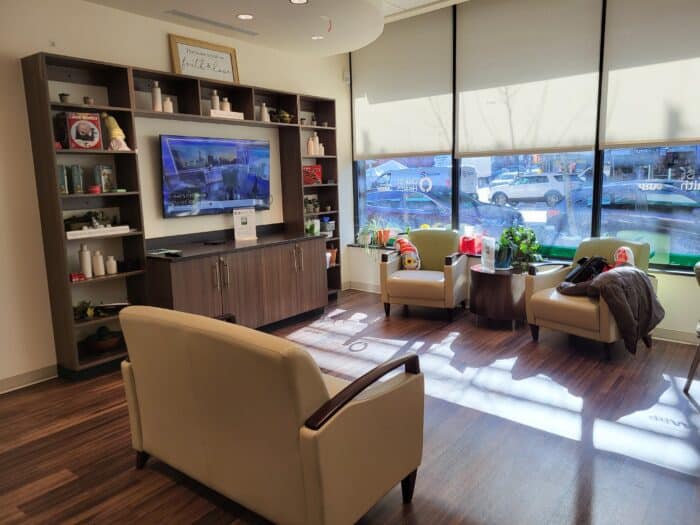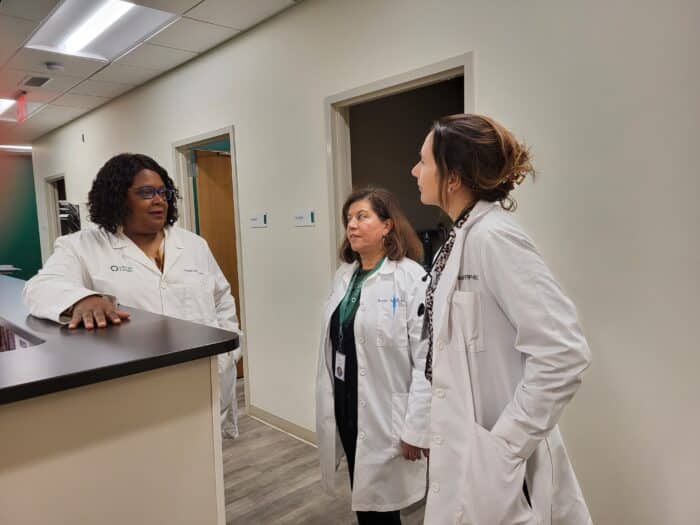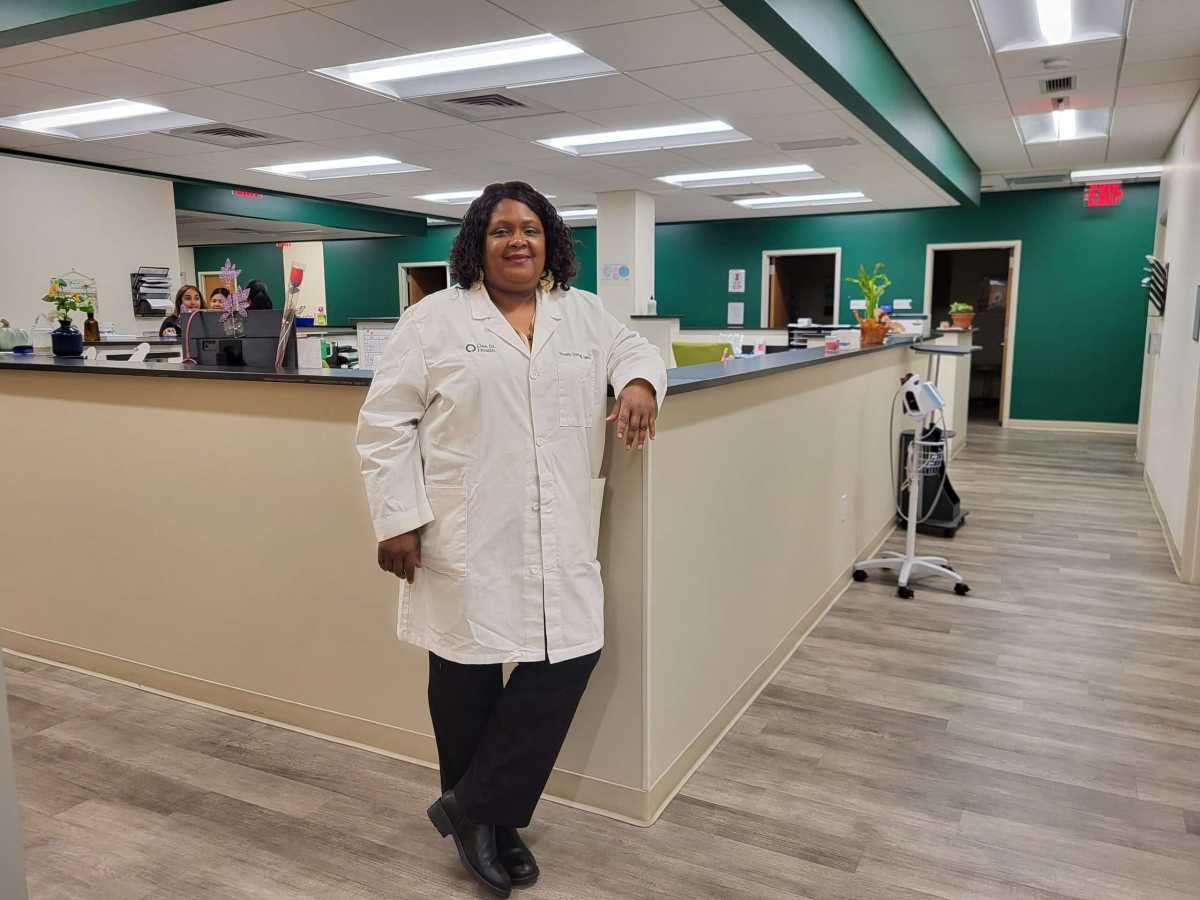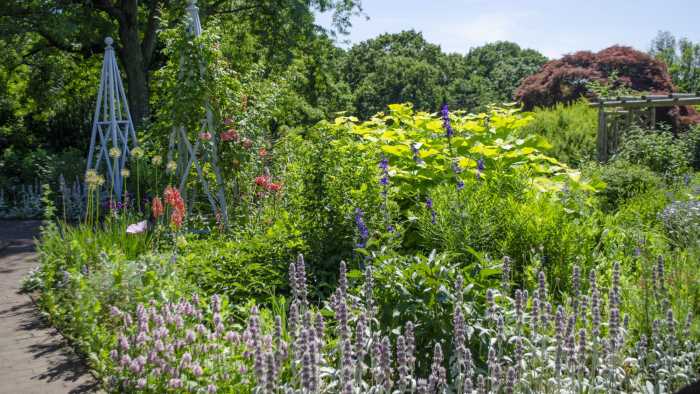Dr. Yonette Davis, originally from Guyana, remembers her first visit to an American emergency room.
She was around 10 years old, and she had a cut on her hand from roughhousing with her brothers. When she arrived at the ER, all the doctors were white — no one working there looked like her. And though the doctors meant well, Davis recalled sensing they were a little too eager, almost excited, to see the injury and stitch her up.
“I remember feeling like I was being experimented on,” she said during an interview with the Bronx Times. From then on, Davis decided, “I’m gonna be part of the system to change the system.”
When Davis and her family came to the U.S. at age 9, they settled into Brooklyn’s Caribbean community along Flatbush Avenue. But in school, she was automatically demoted a grade because it was assumed she was coming from “a second-rate system.” And later, in a college class, a professor tried to teach students how to get rid of their accents.
But Davis stayed true to herself — and she uses that strength to help others who look and sound like her. She has been practicing medicine since 1999 and is now a physician at Oak Street Health in Soundview.
Davis said she always knew one thing: “I love being a Black woman in America.”
‘It wouldn’t look that way on my skin’
Medical school at Mount Sinai was a journey for Davis. Her childhood experiences showed her that medicine should be practiced in different ways with different people, but that was rarely emphasized in what soon-to-be doctors were learning.
Davis noticed how instruction was often geared towards people with light-colored skin. For example, she recalled studying the coloration of a rash and noting, “It wouldn’t look that way on my skin.” Nothing in the instruction seemed to have people of color at the forefront.
Davis understood that in medicine, “we have not done justice” to diverse patients. She cited historical abuses, such as the infamous Tuskegee Experiment where Black men suffered and died due to untreated syphilis, as among the reasons why many patients of color simply do not trust the medical system today.
But as a Black woman, Davis set out to change common perceptions of what medicine is, who practices it and how it is practiced. Her residency at Montefiore is where the former Brooklynite fell in love with the Bronx.
Practicing medicine in the borough, she said, is both satisfying and challenging. Her Oak Street patients, who are generally 65 and older, have a lot of needs because they often come with conditions that were not properly controlled over the years. She sees many cases of diabetes, cardiovascular disease and even untreated cognitive decline among younger-than-expected patients. Mental health is a constant tie-in with any medical issue.
But another major problem, Davis said, is the “lack of medical empowerment” patients have, often stemming from past negative experiences.
And in many Bronx clinics, Davis said, doctors are stretched too thin; they are overbooked and do not have time to really listen to patients and problem-solve in creative and culturally-responsive ways.
But for the most part — and certainly in her case — “providers in general who work in the Bronx have a passion for it,” Davis said.
‘Geriatrics found me’
While in medical school, Davis originally wanted to be a pediatric oncologist — but ended up at the other end of the age spectrum.
“Geriatrics found me,” she said. “I think it’s the best.”
And it helps that Oak Street Health, where she has worked for the past two years, is a welcoming and comfortable place for people of any age. The whole environment is meant to feel familiar, not cold and sterile.
Near the entrance is a lounge with chairs and sofas, a TV, snacks, coffee and tea — and patients are encouraged to drop in even when they don’t have an appointment.
The friendly front desk staff are from the Bronx and the clinic also has staff on hand to help patients with food, housing, transportation and other issues that affect their physical health.

Esther McGill, 76, is a new patient at Oak Street who has lived in the Bronx since the mid-1960s. She told the Bronx Times that outreach staff came to her senior center and presented information. She found them very friendly and it didn’t take much convincing for her to make the switch.
With her previous doctor, McGill said, there was a “bit of a barrier” — even though he spoke Spanish, like she does. She also never felt certain that the front desk staff properly understood her questions and concerns. It was just not a great fit, she said.
But at Oak Street, McGill immediately felt right at home. In fact, before speaking with the Bronx Times, she watered the two droopy plants by the window in the lounge — just as she waters the 13 plants at her place.
McGill said it makes a difference for her to see a warm, diverse group of staff and doctors.
“It’s very nice to see that in the community,” she said.
Although Davis does not yet have McGill as a patient, she said she always felt drawn to groups — whether young or old — “that have to fight for what they need.”
And the field of geriatric medicine needs her, too.
According to the Association of American Medical Colleges, people over age 65 use more health care than any other age group — and the 65+ population is expected to grow by over 40% between 2019 and 2034. A nationwide shortage of geriatricians is projected by 2025.
As one doctor said in the report, “we will never have enough geriatricians” to meet demand.
Underrepresentation

Not only is there a shortage of geriatricians, but Black doctors are underrepresented in the field as well.
Davis said that in recent years, “more and more people are asking for a doctor of color.” But patients will likely find them hard to find. According to the National Institute of Health, Black doctors make up only 5.4% of the physician workforce, and only 2.8% are Black women.
And even though doctors of color are in demand, some old stereotypes still persist. Davis said that many patients, even Black patients, often assume she’s the nurse.
But her Oak Street patients seem to truly understand where she’s coming from, and vice versa.
“They feel like I’m fighting for them,” she said
As a proud female Black immigrant physician, Davis finds great satisfaction in both working and living in the Bronx. Her South Bronx neighborhood, she said, almost has a “small-town feel” where neighbors know each other and everyone is “very protective of me and my daughter.”
Davis knows she is a statistical rarity, but people like her are making a difference in the Bronx on a daily basis.
“Common people doing small things every day, those are the heroes,” she said.
Reach Emily Swanson at eswanson@schnepsmedia.com or (646) 717-0015. For more coverage, follow us on Twitter, Facebook and Instagram @bronxtimes





















